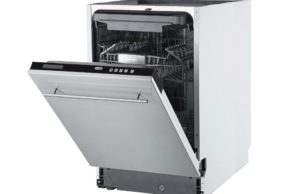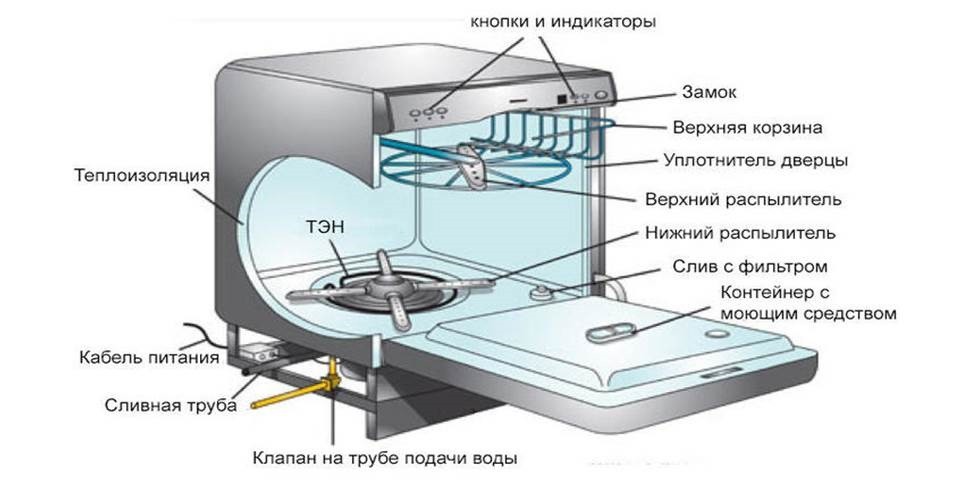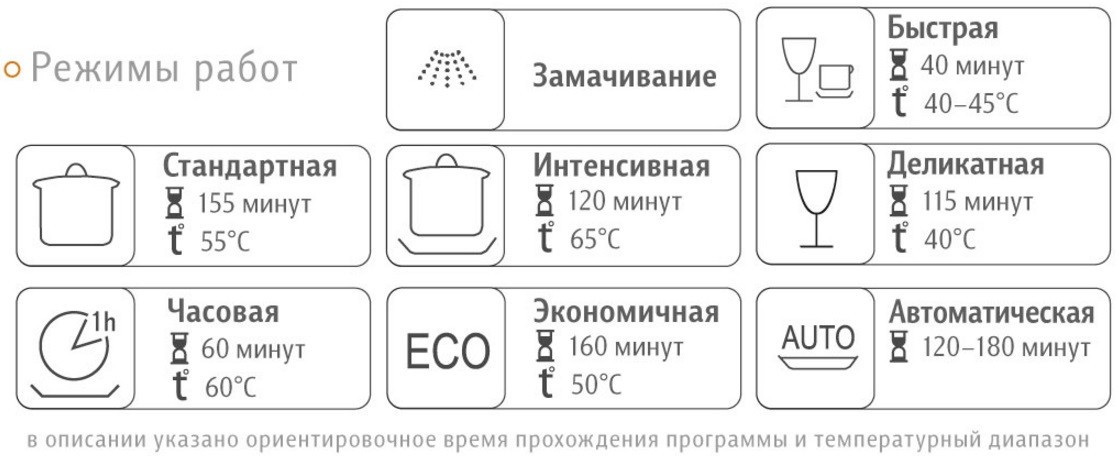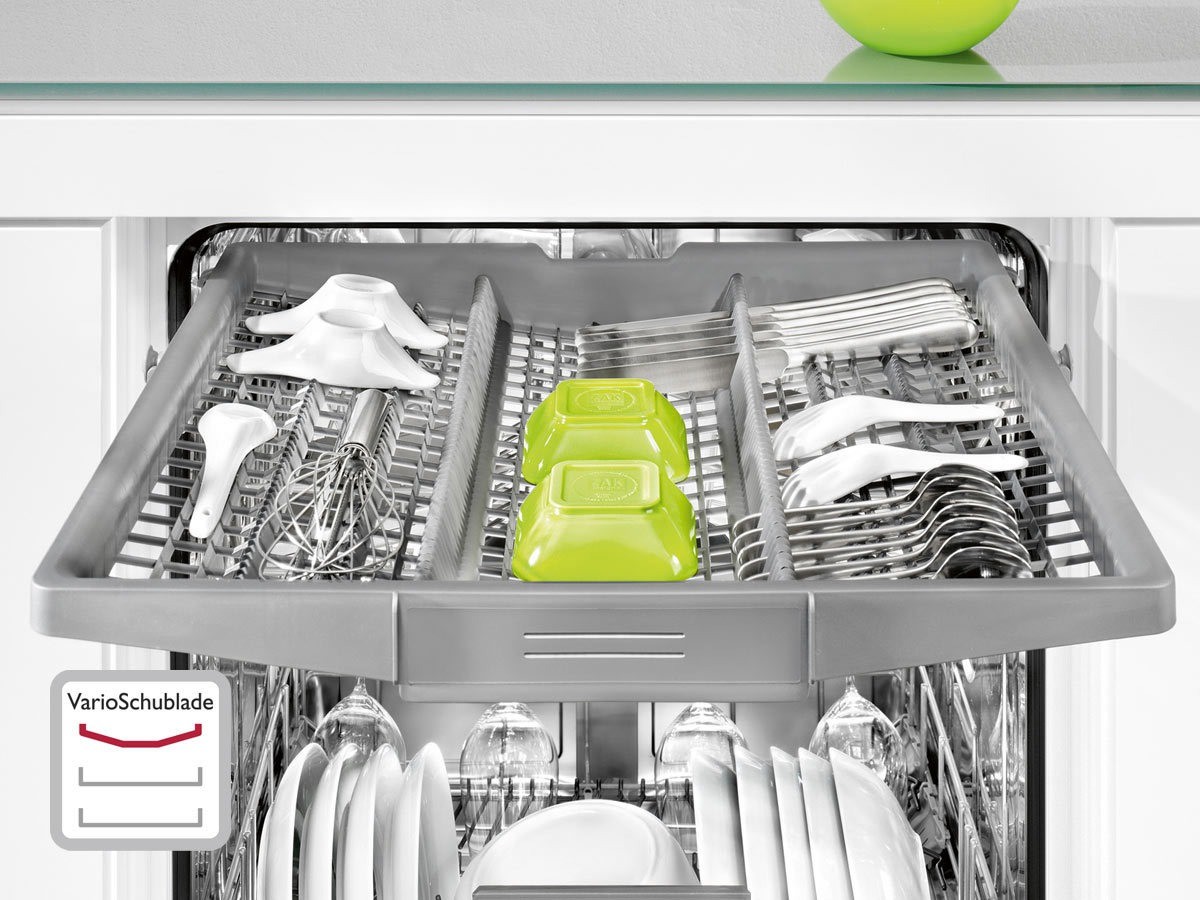What is a dishwasher?
 Many housewives have never encountered a dishwasher in their life, but they only know firsthand about their existence. In principle, there is a general idea of the technique: it does the dishes, but only a small group of users have other, more extensive knowledge. We will try to describe the operating principle of the dishwasher, analyze the functions and options of the unit, talk about variations in the performance of the equipment, and understand how useful such a device will be.
Many housewives have never encountered a dishwasher in their life, but they only know firsthand about their existence. In principle, there is a general idea of the technique: it does the dishes, but only a small group of users have other, more extensive knowledge. We will try to describe the operating principle of the dishwasher, analyze the functions and options of the unit, talk about variations in the performance of the equipment, and understand how useful such a device will be.
What kind of device and how is it arranged?
A dishwasher is a complex electromechanical device designed to clean dishes automatically. The first primitive installation was invented in the distant 19th century, and over the course of two centuries it was constantly technically improved and modified. The dishwasher can be used in everyday life, for serving several people, and also in catering establishments. The machine consists of the following elements:
- a washing chamber, which includes the lower and upper basket, as well as a cutlery tray. Some models can be equipped with a separate place for washing glasses;
- detergent container;
- spray and nozzle systems;
- power wiring;
- TENA, responsible for heating cold water to a predetermined temperature;
- control panels, including various buttons, switches and indicators;
- sealing door;
- drain system;
- thermal insulation material;
- door lock devices;
- water intake valves;
- softening filter;
- a tank for salt composition with an ion exchanger, etc.
 The dishwasher, depending on the cleaning mode launched by the user, can draw cold water from 1 to 5 times. The liquid, having entered the system, is passed under pressure through a softening filter element, warmed up by the heating element and transferred to the nozzles located above the baskets. The speed of the streams washing the cutlery, and, consequently, the cleaning time and the quality of the washing, directly depends on the power of the pumping device that supplies water. Manufacturers very rarely highlight this important parameter in the characteristics of the device, usually only the total power of the dishwasher is prescribed.
The dishwasher, depending on the cleaning mode launched by the user, can draw cold water from 1 to 5 times. The liquid, having entered the system, is passed under pressure through a softening filter element, warmed up by the heating element and transferred to the nozzles located above the baskets. The speed of the streams washing the cutlery, and, consequently, the cleaning time and the quality of the washing, directly depends on the power of the pumping device that supplies water. Manufacturers very rarely highlight this important parameter in the characteristics of the device, usually only the total power of the dishwasher is prescribed.
Sprayers, rotating around its axis, wash the dishes laid out in trays with trickles of water. The liquid flows onto a pan located at the bottom of the chamber, after which it is passed through a mesh filter element and enters a special tank, from there it is returned to the feed pump. When the main cleaning cycle is completed, the waste water is discharged through the drain pipe into the sewer.
During washing, the appliance automatically dilutes the detergent loaded by the user in water. After rinsing the table sets. Also, some models of dishwashers are equipped with a water purity sensor, which allows you to check the quality of the liquid after rinsing.
Main settings
What is a dishwasher and what is the principle of its action, we figured it out, we will move on to another important question: “What parameters and characteristics of the model should I pay attention to when choosing?”.
First, you should definitely look at the size of the machine. Many housewives hesitate to buy a dishwasher precisely because of the lack of space in the kitchen area. However, today you can find quite compact devices that can be built into a furniture set. From the dimensions of the equipment, its capacity directly depends:

Manufacturers under one set of dishes mean 4 plates, a mug, a fork and a spoon.
The volume of the washing chamber, designed for 10 sets, can accommodate several extra plates, since no standards for the size of dishes are provided. Therefore, it is worthwhile to understand that the indicated capacity is only an approximate value.
It is important to remember that pots, pans, or trays placed in the basket will take up space that would be enough to wash 4-5 sets. Devices with a declared capacity of up to six sets are suitable for families of one or two people, and average families are better off buying cars for at least 10 sets of dishes.
Consider the other technical characteristics of the dishwasher, on which you need to focus.
- Water consumption. Equipment in one cleaning cycle consumes much less water than is required for a manual wash. On average, manufacturers claim about the same amount of 10-14 liters. Consumption can be adjusted by the user when choosing economical programs or using the “half load” option.
- Power usage. An important parameter is the electricity consumed by the unit during operation. It is better to choose the technology of the highest class of resource saving. Then the cost of one washing will be significantly lower due to the smaller number of kilowatts spent.
- Power. Powerful machines will handle cleaning much more efficiently and faster. A shorter duration of a standard washing program will reduce energy consumption.
- Noise level. The classic operating parameter indicating the volume of the dishwasher. In a one-room apartment or studio, cars with a small number of decibels (up to 45 dB) should be selected, since the wash almost always starts at night. If the kitchen is located far from the bedroom, it is permissible to purchase more noisy models.
- Car wash class. The higher it is, the more efficiently all the impurities present on the dishes will be washed off.
- Drying class. The “A, A +, A ++” category assumes that the devices from the chamber will be delivered completely dry, class “C” allows the remainder of the drops on the surface of the dishes.
I would like to dwell on the type of drying. It determines the conditions under which the cutlery will dry. So, there are condensation, convective and turbo-drying.
Condensation involves the natural evaporation of water from the surface. After rinsing, the dishes are rinsed with hot water, the drops remaining on the cutlery evaporate, settling on the cool walls of the chamber. The main advantage of this type of drying can be considered the simplicity of the method - no extra devices and parts are required to ensure drying in this way. Consequently, condensation drying machines will be slightly cheaper.
The disadvantage of the condensate method will be the length of the procedure and the imperfect quality of drying. Drops, stains and small puddles of water often remain on the dishes. Increased residual moisture in the hopper of the machine provokes the appearance of an unpleasant odor, therefore, at the end of drying, it is necessary to leave the door of the dishwasher open for ventilation.
A convective method of removing water from the dishes involves drying it by creating air exchange in the chamber. The heat exchanger forces drying of products due to convection movement of air. In some devices, convective drying functions due to the ventilation holes provided in the device body.
Dishwashers with this type of drying cost a little more, but they provide the most effective drying of the washed items.
The turbo dryer operates thanks to a heater and a fan. The heater warms up the air in the chamber, and the fan accelerates it inside the machine. So moisture evaporates much faster. In this case, drying will be the most effective, but also the most expensive: firstly, such models cost more, and secondly, there will be an increased consumption of electricity by the device.
Almost all dishwashers of any manufacturer are equipped with an ion-exchange filter. It is necessary in order to soften the hard water entering the system. Too hard water can damage the heater. The water passing through the ion exchanger is saturated with salt ions, and the magnesium and calcium particles remain in the tank, so the liquid becomes much softer.
Over time, the filler loses its properties, and it must be regenerated with a salt composition.
The dishwasher ion exchanger has a special salt container. It should constantly contain sodium chloride to a predetermined level. Some models are equipped with a special indicator that monitors the level of salt in the container.
The consumption of sodium chloride is set manually by the user, depending on the degree of hardness of the water in your area. Having learned the indicator, you can set the salt flow regulator in accordance with the instructions for use. New dishwashers have the option of automatically fixing the hardness of tap water. So the cost of sodium chloride will be regulated by the device.
Description of common washing modes
All models of dishwashers have more than one cleaning function. The user can independently choose one or another program depending on the contamination of the dishes. Let us examine the definitions of the most common washing modes.
- Express cleaning. Helps to quickly wash slightly contaminated cutlery. The duration of the program is much shorter than with a standard cycle.
- The economical mode allows to save water and electric resources to the maximum.
- Intensive washing. It involves heating the water to the maximum possible degree. From this program, we can expect increased electricity consumption. The benefits of intensive cleaning are great - the dishes will practically undergo sterilization, which means they will definitely be neutralized from bacteria. When starting an intensifier, it is better not to put plastic and thin glass products in the camera, such material may be damaged by a high degree of heating of water.
- Delicate cycle. Perfect for cleaning dishes from fragile materials. Water will warm up with a heating element up to 45 ° C, therefore, in this mode, you can wash any products.
- Rinsing. It involves prompt washing of dishes without the use of household chemicals. It is usually used if it is necessary to refresh clean, but long standing dishes in the cabinet.
- Pre-soaking. This option is considered one of the most important. The dishwasher can qualitatively remove only fresh dirt. Often, housewives “accumulate” dishes to the required volume, as a result of which the food remains dry up and adhere tightly to the surface of kitchen appliances. The same goes for burnt foods. So, before starting the cleaning, it is necessary to soak the dishes, which is also possible in the sink, but it is much more convenient to entrust this task to the machine.
- Half load. An economical program that runs when only one basket is full in the engine chamber. This halves the consumption of water and detergents. However, the efficiency of such a cycle will be lower than with conventional cleaning.

By purchasing a dishwasher with a sufficiently wide functionality, you can adjust the operation of the device for each specific sink. This means that you will have the opportunity to independently control the washing time, and, consequently, the expenditure of all types of resources.
The principle of selection of equipment
Each family should select the optimal capacity of the dishwasher, focusing on their needs. If you like to receive guests, or the household promotes healthy five meals a day, then in the evening a lot of dirty dishes will accumulate, and even for 3 people you need to choose a bigger car. And, on the contrary, if family members are busy at work, at schools and in various sections until evening, and are going to dinner only, you can pay attention to compact household appliances.
On average, a family of 4, 5 people will have enough dishwasher for 10-13 sets of dishes.
Also focus on your specific preferences: if speed of washing is important to you, choose units with a turbo-dryer and high power. When the first priority is the cleanliness of the dishes to be cleaned, look at the equipment washing class. The soaking function will be necessary for housewives who do not want to accumulate soaking dishes in the sink.
Interesting:
Reader Comments
- Share your opinion - leave a comment
Headings
Washing machine repair


For buyers
For users

Dishwasher


















Add a comment